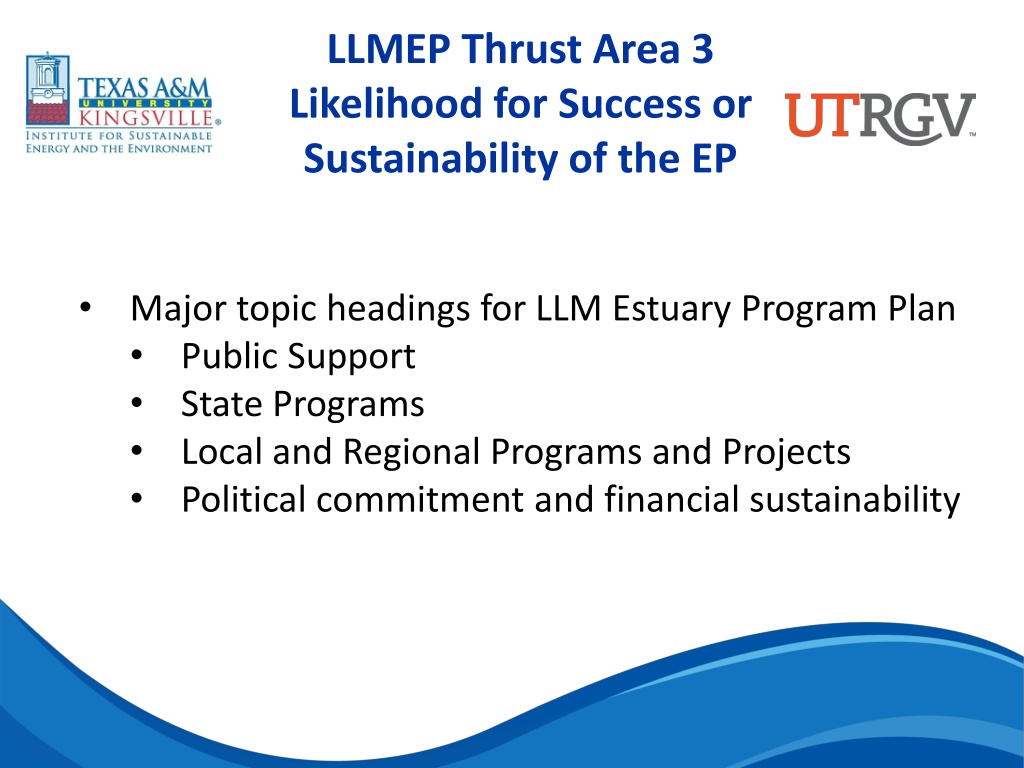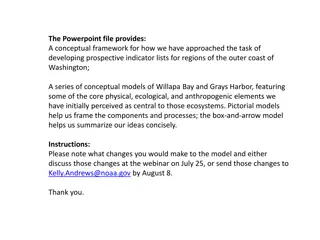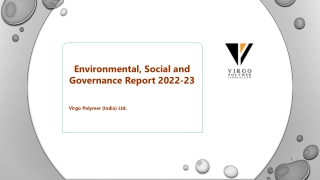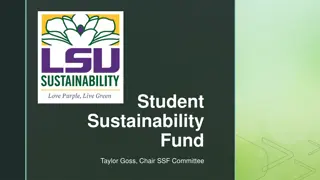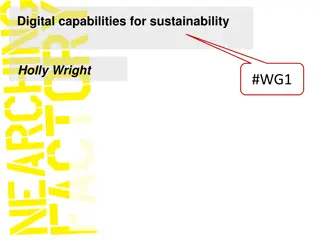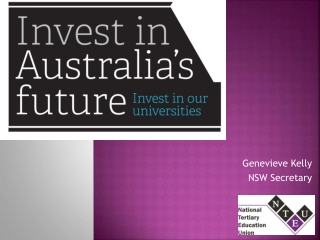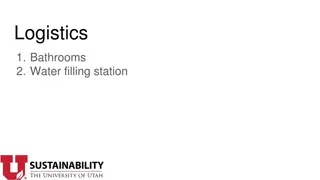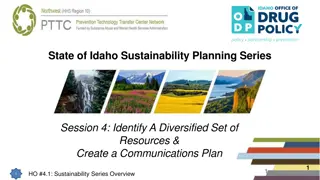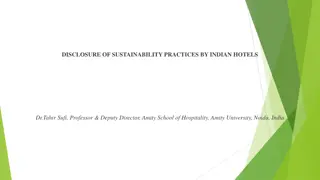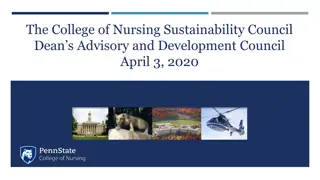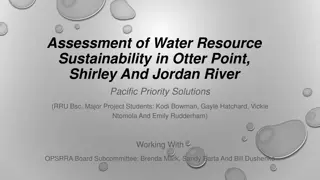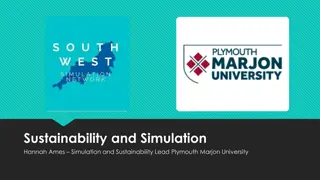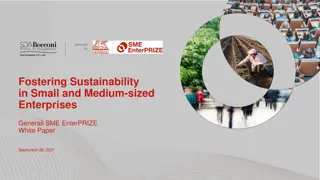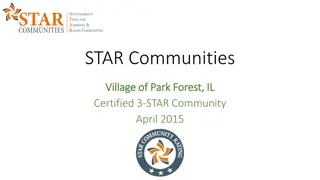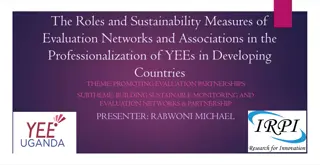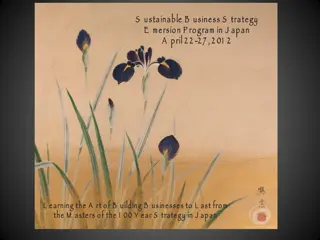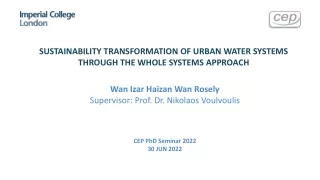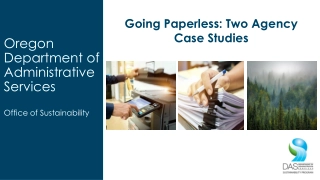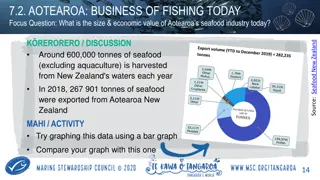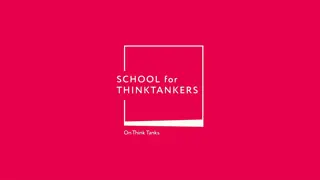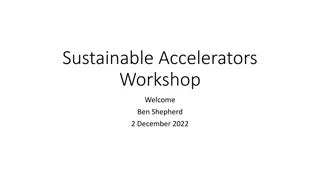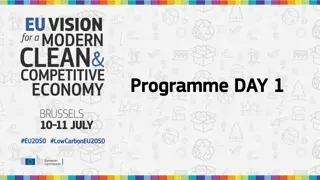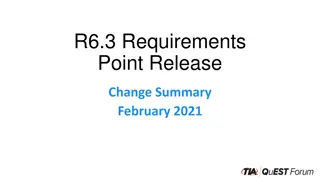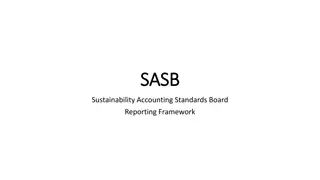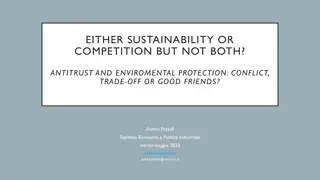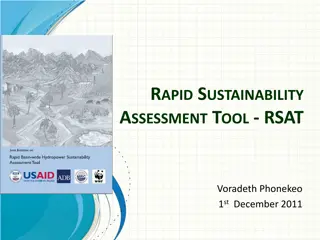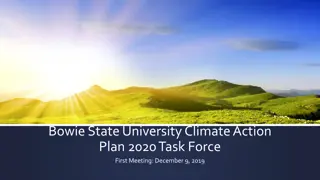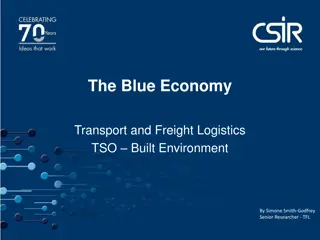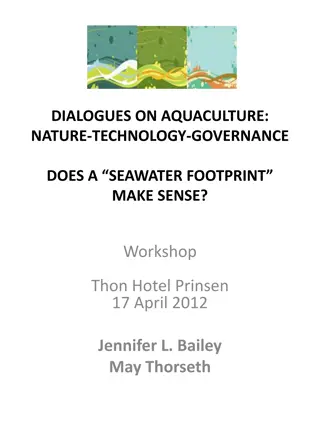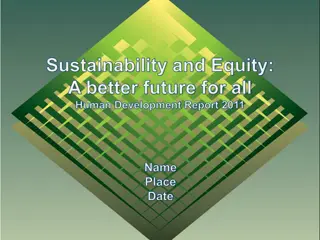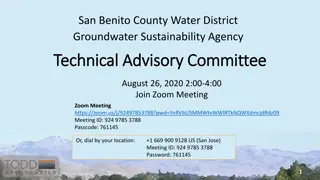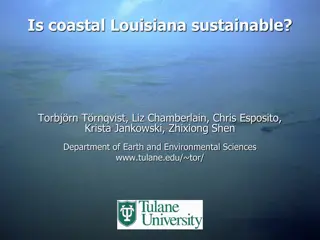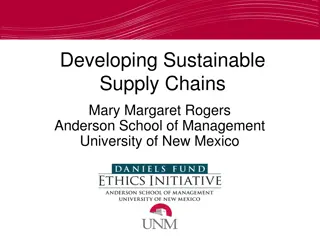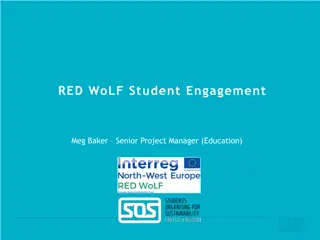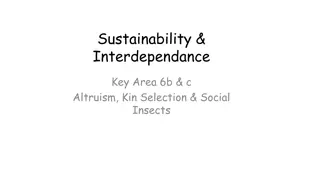Enhancing Sustainability of the LLMEP Estuary Program
This document outlines key focus areas concerning the likelihood for success or sustainability of the LLMEP Estuary Program, including public support, state, local, and regional programs, funding sources, public awareness initiatives, and stakeholder partnerships. It emphasizes the importance of financial sustainability, external funding sources, research programs, public education, and stakeholder engagement to ensure the program's success and environmental impact.
Download Presentation

Please find below an Image/Link to download the presentation.
The content on the website is provided AS IS for your information and personal use only. It may not be sold, licensed, or shared on other websites without obtaining consent from the author. Download presentation by click this link. If you encounter any issues during the download, it is possible that the publisher has removed the file from their server.
E N D
Presentation Transcript
LLMEP Thrust Area 3 Likelihood for Success or Sustainability of the EP Major topic headings for LLM Estuary Program Plan Public Support State Programs Local and Regional Programs and Projects Political commitment and financial sustainability
LLMEP Thrust Area 3 Likelihood for Success or Sustainability of the EP Major topics from earlier Workshop Role of 501 (c) (3) for EP Establishment of regional and local base level funding Role of existing regional foundations Role of SWTF and CC TF and other municipal groups
LLMEP Thrust Area 3 Likelihood for Success or Sustainability of the EP External source of funding, local and regional programs and projects, and local agreements between cities and counties. Enable grants from Federal sources, organizations and institutions such as HESTEC, CDBJ, and University Grant Sourcing. Organizations such as Galveston Bay Foundation, TCEQ and Coastal Bend Bays and Estuaries Program could help provide support; it is important to have Counties, Universities and Ports act as the primary leads for some sources of funds; the strength of the LLMEP coalition is in bringing together partners to accumulate even small funding support resources
LLMEP Thrust Area 3 Likelihood for Success or Sustainability of the EP Increasing public awareness in schools and ISDs is important Creative research programs and plans needed Establish a regional research center that includes, water, air, soil, aquatic life, biological aspects, others or US/Mexico research group or center. Public education and training; stakeholder groups can engage and provide monitoring support Seek support from the neighboring counties/groups/programs not included within LMEP boundary but still value the resources and benefits and understand the risks in increasing the pollution within LLM
LLMEP Thrust Area 3 Likelihood for Success or Sustainability of the EP Stake holders Partners listed include: GLO, Rail Road Commission, AC Watershed Partnership, Irrigation districts, drainage districts, City of South Padre Island, County Commissions, Port Isabel Navigation district, LLM water district, Fish and wildlife districts, TX Parks and Wildlife, Texas Shrimp Association, CCAs, Port of Brownsville, Birding Centers, School Districts and community colleges, Harte Research Institute, Lone Star USACE CENTER, Oil and Gas operators, LNG industry partners, Sierra Clubs, IBWC, EPA/TCEQ, BECC/North America Development Corporation (NDC),
LLMEP Thrust Area 3 Likelihood for Success or Sustainability of the EP Stake holders - Continued Partners listed include: Gorgas Science Foundation, NSF, USDA, Texas Agrilife, Texas Sea Grant Program, Cameron County Regional Mobility Authority (CCRMA), NOAA, municipal brackish water programs, FEMA, Texas Master Naturalists, Corps of Engineers dredging plans, National Flood Insurance Program (NFIP), PUB, USFW, TPWD, Texas Sea Grant, NRCS.
LLMEP Thrust Area 3 Likelihood for Success or Sustainability of the EP Local and Regional Programs and Projects Rio reforestation, National Weather Service in Brownsville, NOAA, desalination projects, municipal brackish water programs, invasive plants, LRGV Stormwater Task Force, FEMA, , LLM Brownsville Ship Channel Watershed Protection Plan, Texas State Soil and Water Conservation Board, restoration for stream banks, Bahia Grande restoration project, South Padre Island dune protection, Mexus Gulfo, GLO, Texas Master Naturalists, Corps of Engineers dredging plans, National Flood Insurance Program (NFIP).
LLMEP Thrust Area 3 Likelihood for Success or Sustainability of the EP Political Commitment and Financial Capabilities Organizations With Financial Capabilities - NOAA, GLO, PUB, USFW, TPWD, Texas SEA GRANT, USDA, NRCS, Texas Water Development Board, TDA, Local Foundations, BECC, Volunteer Organizations, EPA-Urban Water Programs, , Association of Ports.
LLMEP Thrust Area 3 Likelihood for Success or Sustainability of the EP Political Commitment and Financial Capabilities Organizations From Existing Political Infrastructure - State Representatives HESTEC, STORMWATER TASK FORCE, ARROYO WATERSHED CONSERVACY/PROTECTION, COASTAL CITIES TASK FORCE, IRRIGATION DISTRICTS, COUNTY COMMISIONS,, VALLEY NATURE CENTER AND TOURISM CO-OP, TEXAS RV ASSOCIATION TRVA RGV CHAPTER, TEXAS DOT, LRGDC, COG
LLMEP Thrust Area 3 Likelihood for Success or Sustainability of the EP Public Support Texas Agrilife, RGV Nature Naturalists, Red Tide Rangers, school districts, ISDs, TCEQ, Coastal Studies Laboratory-UTRGV, TAMUK, TAMUCC, Public radio groups, Texas Sea grant program, Diocese of Brownville, Valley Interfaith, Keep Texas beautiful groups, Coastal Conservation Association (CCA)
Initiatives - Update Other Initiatives lead by Task Force (continue development with Cameron County, UT-RGV, TAMUK) Laguna Madre Estuary Program (4 pathways) UTRGV/Cameron County Partnership GLO Funded (Grant) TAMUK and UTRGV (i.e. Galveston Bay Estuary Program, Coastal Bay Estuary Program) EPA RESTORE NOAA Governor s Support/ TCEQ support (Nomination) Congressman Initiative (Reauthorization 2019) Center of Excellence (NSF, RESTORE)
Advisory Group Management Committee Local Governments Advisory Committee Scientific/Technical Advisory Committee (TAC) Citizens Advisory Committee Financial Planning Advisory Committee
Advisory Group Nominations U.S.EPA, Doug Jacobson CBBEP, Ray Allen TSSWCB Brian Koch TWDB Carla Guthrie, Ph.D. Port of Brownsville, Ariel Ch vez II, P.E The Nature Conservancy, Sonia Najera
Feedback from previous meetings Question 1- Is 501(C) (3) a priority? Maybe in the near future? What issues may impact program sustainability if there s no external source of funding? Response 1- There should be base funding from committed local groups Response 2 If base funding is insufficient, local agreements between cities and counties, and memorandums to guarantee funding is another means. Question 2- Are there any 501 (c) (3) or other approaches to meet federal requirements for funding? To enable grants from Federal source? Response 1-Organizations and institutions such as HESTEC, CDBJ (?), University Grant Sourcing, should act as non-profit vehicles for funding Response 2 Organizations such as Galveston Bay Foundation, TCEQ and Coastal Bend Bays and Estuaries Program could help provide resources. It s important to have counties, universities and ports to act as the primary lead for sourcing funds. The strength of the LLMEP coalition is in bringing together partners to accumulate even small.
Feedback from previous meetings Question 2- Are there any 501 (c) (3) or other approaches to meet federal requirements for funding? To enable grants from Federal source? Response 3- Fund layer progression should be from University-led to local government to NGOs and industries/Hybrids. Response 4- 501(C) (3) operation is not much good without grant managers and a good Board of Directors. Someone must be appointed to oversee grants and independently work with collaborators. Response 5- Partnership should be initiated with existing orgs. (Matt R from RSTEC) Response - Universities are an instrument for identity building to bring in other partners and communities/stakeholders to ensure a sense of belonging and ownership which should afterward takeover. It s a transition process.
